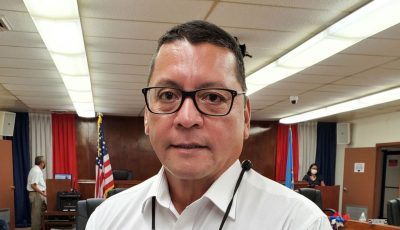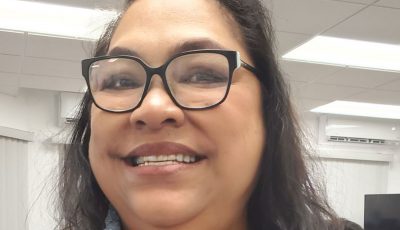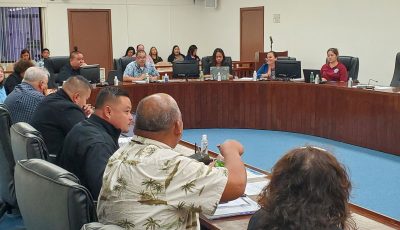MHS would like 4 to 5 more teachers
With this year’s increase of about 100 students, Marianas High School needs about four or five teachers to reduce the current student-teacher ratio of 34:1 to a “comfortable” level, according to MHS principal Sherlyn Cabrera.
“Class sizes are larger than we like,” she said. “We want our students to have the best learning experience and not overstress our teachers… so we’re trying to even out those numbers.”
In the meantime, she said the school has been using substitute teachers to “fill some of the gaps.”
“Some of [the substitute teachers] are working on their certification papers so they can become full-fledged classroom teachers,” Cabrera said, noting that it is their goal to have all teachers certified.
The four to five teachers, according to Cabrera, are needed for subjects like language arts, math, and science.
“Those [subjects] are the probably the big ones,” she said.
MHS currently has 46 teachers for its population of 1,560 students, according to Cabrera. Last year’s population was around 1,450 students.
“The student population is significantly larger than last year,” she said.
According to her, the school actually started the school year with 1,600 students but that number decreased, as for whatever reason, students left for other schools.
PSS reported last month that classroom teacher-student ratios continue to increase. By the end of school year 2012-2013, the ratio sat at 36:1, an all-time high.
MHS’ ratio of 34:1 is above the Board of Education’s policy of 25:1.
Based PSS data, the last time the ratio was met among all schools was in school year 2011-2012, at 24:1.
To meet this number, about 200 teachers would be needed for the system, with about $7.6 million more needed in local appropriations to fund this increase, according to Tim Thornburg, PSS federal programs officer, earlier this month.
Some $28.8 million of their locally appropriated budget of $32 million for fiscal year 2014 goes to wages and salaries, according to PSS, while the remaining funds are spent for utility costs and facility operation and maintenance.



























